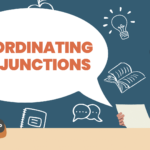Conjunctions are like the connectors of the English language, helping us link words, phrases, and clauses to form coherent sentences. Among these, paired conjunctions play a crucial role in connecting similar elements within a sentence. In this exploration, we’ll break down the definition of paired conjunctions, look at how they are used, and provide practical examples for better understanding.
What are Paired Conjunctions?
Paired conjunctions, also called correlative conjunctions, come in sets, working together to link similar elements in a sentence. They help maintain a balanced and parallel structure. Common examples include not only/but also, either/or, neither/nor, both/and, whether/or, as/so, just as/so, and not just/but also.
How to Use of Paired Conjunctions?
Not only/but also:
- Usage: Used to present two parallel ideas, emphasizing the importance of both.
- Example: She is not only intelligent but also compassionate.
Either/or:
- Usage: Indicates a choice between two options.
- Example: You can either join us for dinner or attend the concert.
Neither/nor:
- Usage: Expresses the absence of two options.
- Example: Neither the teacher nor the students were satisfied with the test results.
Both/and:
- Usage: Emphasizes the inclusion of two elements.
- Example: The project requires both creativity and precision.
Whether/or:
- Usage: Introduces alternatives or possibilities.
- Example: I am unsure whether she will come to the party or stay home.
As/so:
- Usage: Indicates a cause-and-effect relationship.
- Example: As the sun set, the temperature dropped, so we decided to light a fire.
Just as/so:
- Usage: Draws a parallel between two events or situations.
- Example: Just as the flowers bloomed, so did our excitement for spring.
Not just/but also:
- Usage: Adds emphasis to both elements, highlighting the significance of each.
- Example: The movie was not just entertaining but also thought-provoking.
Examples in Sentences:
Here are some sentences that uses paired conjunctions:
- She is not only a talented singer but also an accomplished dancer.
- You can either finish your homework now or face the consequences tomorrow.
- Neither the rain nor the thunderstorm could dampen their spirits.
- The new curriculum emphasizes both theory and practical application.
- We need to decide whether to take the train or drive to the conference.
- As the clock struck midnight, so began the New Year celebrations.
- Just as the chef added the final touch to the dish, so did the aroma fill the kitchen.
- The museum is not just a repository of artifacts but also a hub for cultural events.
Here is a Table for Better Understanding:
| Paired Conjunction | Usage | Example |
|---|---|---|
| Not only/but also | Emphasizes two parallel ideas | She is not only intelligent but also compassionate. |
| Either/or | Indicates a choice between two options | You can either join us for dinner or attend the concert. |
| Neither/nor | Expresses the absence of two options | Neither the teacher nor the students were satisfied with the test results. |
| Both/and | Emphasizes inclusion of two elements | The project requires both creativity and precision. |
| Whether/or | Introduces alternatives or possibilities | I am unsure whether she will come to the party or stay home. |
| As/so | Indicates a cause-and-effect relationship | As the sun set, the temperature dropped, so we decided to light a fire. |
| Just as/so | Draws a parallel between two events or situations | Just as the flowers bloomed, so did our excitement for spring. |
| Not just/but also | Adds emphasis to both elements | The movie was not just entertaining but also thought-provoking. |
Frequently Asked Questions (FAQs) About Paired Conjunctions:
1. What are paired conjunctions?
Paired conjunctions, or correlative conjunctions, are sets of connectors in English that link similar elements with balanced and parallel structure. Examples include not only/but also, either/or, neither/nor, both/and. They play a crucial role in forming coherent and well-structured sentences.
2. Can you provide examples of paired conjunctions?
Sure! Common examples include not only/but also, either/or, neither/nor, both/and, whether/or, as/so, just as/so, and not just/but also.
3. How do not only/but also conjunctions work?
“Not only/but also” is used to present two parallel ideas, emphasizing the importance of both. For example, “She is not only intelligent but also compassionate.”
4. When should I use either/or conjunctions?
“Either/or” is used to indicate a choice between two options. For instance, “You can either join us for dinner or attend the concert.”
5. What is the purpose of neither/nor conjunctions?
“Neither/nor” expresses the absence of two options. For example, “Neither the teacher nor the students were satisfied with the test results.”
6. How do both/and conjunctions function?
“Both/and” emphasizes the inclusion of two elements. For instance, “The project requires both creativity and precision.”
7. What is the role of whether/or conjunctions?
“Whether/or” introduces alternatives or possibilities. For example, “I am unsure whether she will come to the party or stay home.
8. How do just as/so conjunctions work?
“Just as/so” draws a parallel between two events or situations. For example, “Just as the flowers bloomed, so did our excitement for spring.”
9. What is the significance of not just/but also conjunctions?
“Not just/but also” adds emphasis to both elements, highlighting their importance. For instance, “The movie was not just entertaining but also thought-provoking.”
10. Can I use paired conjunctions in both formal and informal writing?
Yes, paired conjunctions are versatile and can be used in various writing styles, including both formal and informal contexts.
Conclusion:
Paired conjunctions are handy tools for crafting clear and balanced sentences. Understanding their definitions, varied uses, and exploring examples can enhance your writing skills, making your compositions more polished and effective.


